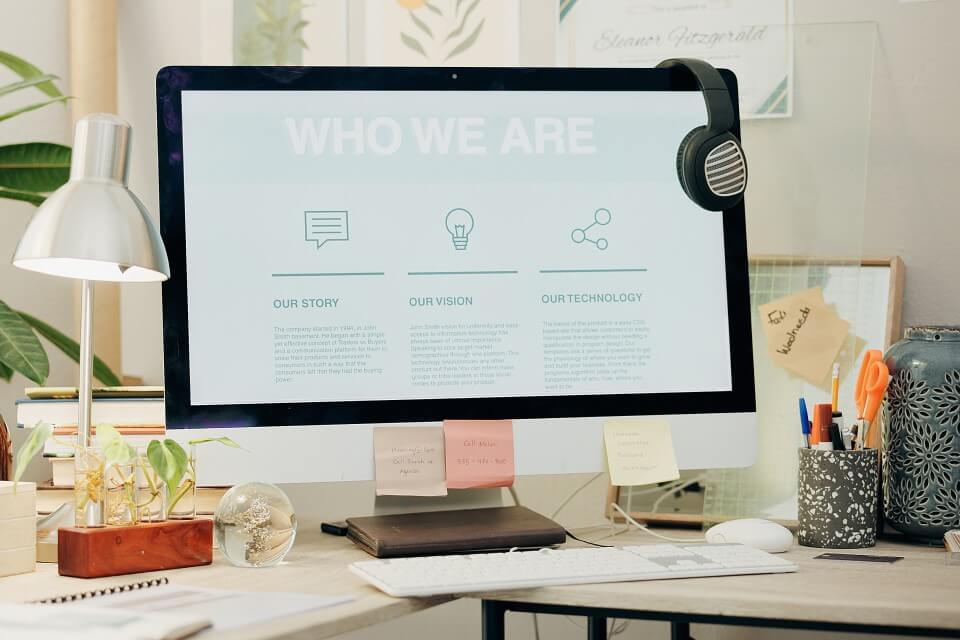In many cases, a website is one of the first interactions you’ll have with a potential client.
If you meet with someone in person, the only reason they’ll take a business card is for your website address so that they can gain more information about your company in the privacy of their home or office.
And if they find you through search, they’ll form an instant impression based on what they see as they click and the page begins to appear.
Seconds. Not minutes. A potential client forms an opinion in seconds, and chooses whether to move forward or to back away forever.
That’s a lot riding on what appears.
How confident are you your website can do the job?
A great website has the capacity to impact your target market in a variety of ways.
It has the ability to:
- Capture attention
- Establish credibility
- Build trust
- Engage users
- Support customers
- Generate leads
- Close sales
- Increase your bottom line
That’s a lot for any marketing tool to do. And very often businesses fall short in the process. They choose to develop a website to accomplish one or two things instead of the complete strategy. They choose a site to capture attention, for instance, without thinking twice how it will engage users. Or they choose a site to generate leads, without considering the credibility it builds with their target market.
What People Want
So what do people want when they first view a website? Overwhelmingly, the very first thing that matters most is what captures their eye. Design elements matter when building trust, at least in the first few seconds of the opinion-forming process. When the first page they see pops into view, people want:
- Simple layouts that make sense, not confuse
- Clean pages that are pop-up free
- Copy that isn’t overwhelming or too small to read
- Easy loading pages that follow a natural flow
- Vibrant web pages that have a modern look and feel
- Fast response time
Yes, your design matters. If it was built to operate quickly in 2010, chances are it’s a dinosaur. If you built it on a templated platform and it looks like everybody else, prospects will treat it like everybody else, and move on to look for something more.
There’s Design, And Then There’s Copy
What’s just as important as your design? Your copy.
Yes, content is equally important to the looks of a site. Visit any company’s website; what keeps you there? You may form your opinion about the site in a few seconds upon entry, but it’s the copy that keeps you there. High quality design captures attention; content keeps them vested in moving forward.
People don’t want the boring old copy they can get anywhere. You know, the traditional marketing copy you find on just about any businesses old-school brochures. The copy that talks about you in a stuffy old-school way. People want fresh content that makes them take notice of who you really are as a company. They want relevant information for what they’re looking for. They want a clear, informative story that helps them learn who you are. They want things that are age-specific, problem-specific, clearly defined to provide answers to why they are looking for companies like yours in the first place.
They look for websites with personality.
If they love your design, they love what you have to say, they have the desire to want to take the next step with you.
Dig Deeper
Web Development Do’s And Dont’s
How Website Performance Impacts Your Google Search
The Web Design/SEO Relationship
Okay, so now you know how important the look of your website is. And you know it’s equally important to have a personality in the copy that’s written on your site.
Do you also know about SEO?
SEO is search engine optimization. SEO’s been around for a long time, but it’s changed drastically over the years. What was acceptable a few short years ago can now get you banned permanently from search engine results.
Yes, search engine optimization is that critical to your bottom line.
That means as a web designer, we don’t just have to understand graphics and how to make your website memorable, we also have to make sure that the search engines love it too.
Keep in mind that search engines change their requirements all the time. They update their algorithms to provide their searchers with better results. And in the process change the rules of how they’ll rank a particular website.
Old-school designed sites may be using outdated ideas. Which means your site can move from first page to no page ranking overnight. As a designer, we take that into consideration, and ensure we use best practices for every design. We know what search engines love today, what they loved a year ago, and what they loved ten years ago. Some things never change.
So it’s a matter of building a clean site using today’s best features, and doing so in a way that makes you, your prospects and the search engines happy.
Can you imagine having a site that isn’t optimized for mobile devices today? Neither can we. Or searchers. Or the search engines. That’s why it’s important to design a site with responsive design as one if its top criteria.
And that’s just for starters.
How They Convert
At the end of the day, the reason you have a website in the first place is to gain new clients. That means taking them from the initial point they first connect with you, to the point they sign on the dotted line.
If people don’t say “yes”, click the button and convert into paying customers, your website isn’t 100 percent effective.
So what will make your prospects say yes?
Navigation
Websites that present challenges to visitors are likely to have the highest abandonment rates. Intuitive site structure encourages users to take the next step. It provides buttons that tell people what to do, user-friendly features to help the process along the way.
Wording
Do your call-to-action features provide viewers with clear directions? These features have a direct impact on conversion rates. This isn’t a time to make your viewers “guess” what the next step should be. The clearer you are – click here, download this, buy now – the more your conversions will increase.
Color
Color matters. Research suggests that big, bold, red headlines help people focus. Navy blue buttons instill trust and make people want to click to the next step. There is a science to choosing the right colors to move people from location to location.
So how well does your current website stack up? Are you meeting the needs of your prospects and customers?
Or is it time for a change?




